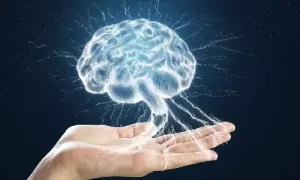
The new diagnostic test can not only generate a positive or negative result, but it also measures the viral load — the concentration of virus — in a given sample
Scientists have developed a novel technology for a CRISPR-based COVID-19 diagnostic test that uses a smartphone camera to provide accurate results in under 30 minutes.
According to the research published in the journal Cell, the new diagnostic test can not only generate a positive or negative result, but it also measures the viral load — the concentration of virus — in a given sample. All CRISPR diagnostics to date have required that the viral RNA be converted to DNA and amplified before it can be detected, adding time and complexity, the researchers said.
In contrast, the new approach skips all the conversion and amplification steps, using CRISPR to directly detect the viral RNA, they said.
“One reason we are excited about CRISPR-based diagnostics is the potential for quick, accurate results at the point of need,” said Jennifer Doudna, a senior investigator at Gladstone Institutes in the US.
“This is especially helpful in places with limited access to testing, or when frequent, rapid testing is needed. It could eliminate a lot of the bottlenecks we’ve seen with COVID-19,” Doudna said.
Doudna won the 2020 Nobel Prize in Chemistry for co-discovering CRISPR-Cas genome editing, the technology that underlies this work.
In the new test, the Cas13 protein is combined with a reporter molecule that becomes fluorescent when cut, and then mixed with a patient sample from a nasal swab, the researchers said. The sample is placed in a device that attaches to a smartphone. If the sample contains RNA from SARS-CoV-2, Cas13 will be activated and will cut the reporter molecule, causing the emission of a fluorescent signal, they said.
The smartphone camera, converted into a microscope, can detect the fluorescence and report that a swab tested positive for the virus, according to the researchers. They say that the assay could be adapted to a variety of mobile phones, making the technology easily accessible.
When the scientists tested their device using patient samples, they confirmed that it could provide a fast turnaround time of results for samples with clinically relevant viral loads. The research found that the device accurately detected a set of positive samples in under five minutes. For samples with a low viral load, the researchers said, the device required up to 30 minutes to distinguish it from a negative test.








